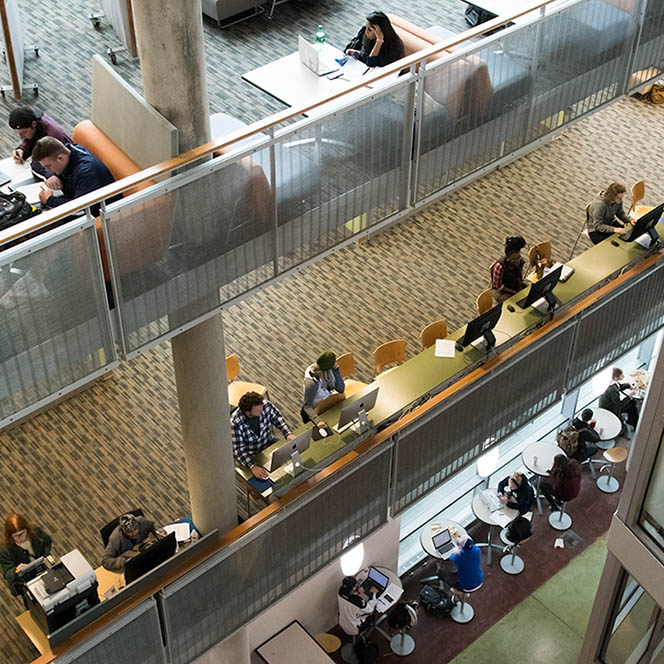
Not every classroom looks the same on our Boise State campus, but some have been designed to specifically foster student engagement. These active learning classrooms (ALCs) are equipped with flexible furniture and/or design, which allows for multiple pedagogical activities. There are three kinds of active learning classrooms at Boise State: Flat classrooms with flexible tables and chairs (e.g., ILC 304), tiered classrooms with pre-grouped seating arrangements (e.g., ED 112), and tiered classrooms with double rows (e.g., MCMR 205).
ALCs provide a variety of benefits for teaching and learning, including making it easier for instructors to implement active learning strategies and access any student regardless of the student’s position in the room. In addition, research has shown that students in ALCs outperform their peers in traditional classrooms (Cotner et al., 2013) and students report that ALCs seem to have been designed with the student in mind, offering a comfortable atmosphere to collaborate with peers. Further, well-designed active-learning classrooms can bolster students’ performance in STEM. Walker et al, (2011) found that ALCs help build connections between peers, students are more engaged, and faculty can feel more connected to students.
In order to get the most out of your classes in ALCs, consider some of the following tips for success (more tips can be found in the ALC workshop resource):
- Plan ahead by visiting the space before the first class session to see the layout, furniture and technology. Make sure the classroom space, layout, and pedagogical plans are accessible for all students.
- Prepare your students for learning in an active environment. Introduce the ALC and your pedagogical approach in the syllabus and send students a pre-survey that gathers information about any needs/preferences for where they sit in class (i.e., eyesight, hearing, PTSD, etc.).
- You do not have to make big changes all at once! Small steps and changes can go a long way. For example, find ways to modify lessons you are already doing in your non-ALC space. You can also use micro-lectures, where you create shorter lectures interspersed between periods of student activity.
- Take advantage of the flexible space by moving around and engaging with students. Are you nervous about getting students’ attention back after an activity? Experiment with a call to attention signal (e.g., timer, raising your hand, light signal).
- Remember to identify learning strategies that provide students with multiple ways to engage with the content, their peers, and the instructor. Many tips and practices are included in the “Tips for Facilitating Activities” resource. Some examples include:
- Preparing oral and visual instructions (e.g. PowerPoint slides or a handout)
- Assign students roles in group and team work
- Establish a clear way that you will bring the group back together (e.g. light signal or raise your hand)
- Give students the opportunity to report, react, and/or reflect through a variety of Methods and Formats
Are you scheduled to teach in an active learning classroom and would like some help to plan your course? Contact the CTL to request a consultation.
Author:
Sarah Lausch